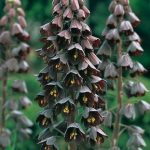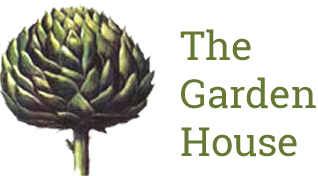We love: Fritillaria
Posted:11 April 2011
This fascinating genus contains over 100 species of bulbous perennials, from the tall and dramatic F. imperialis (Crown Imperial) to the delicate F. meleagris (snake’s head fritillary) with its distinctive chequered flower. In the main they originate from around the Mediterranean, Asia and North America (F.meleagris is the one species of fritillaria thought to be native to Britain).
 The majority bloom in spring and have distinctive flowers that are generally bell-shaped and pendant. These hardy bulbs need deep, rich and well draining soil and should be planted in autumn to a depth of at least twice that of the bulb. They can also be successfully grown in pots, which in the case of F. imperilais is helpful, making them easier to move under cover during the winter months.
The majority bloom in spring and have distinctive flowers that are generally bell-shaped and pendant. These hardy bulbs need deep, rich and well draining soil and should be planted in autumn to a depth of at least twice that of the bulb. They can also be successfully grown in pots, which in the case of F. imperilais is helpful, making them easier to move under cover during the winter months.
 Other favourites include F. persica, a deep dusky mauve, and F. persica Ivory Bells. Flowers are held in long racemes of up to 30 narrowly bell-shaped somewhat conical flowers, about ¾” long with a waxy bloom.
Other favourites include F. persica, a deep dusky mauve, and F. persica Ivory Bells. Flowers are held in long racemes of up to 30 narrowly bell-shaped somewhat conical flowers, about ¾” long with a waxy bloom.
Also look out for Fritillaria michailovskyi, it has up to five, pendant reddish-purple bells with a yellow edge on the outside and a shiny yellow interior. Like F. meleagris it is only 8-10” tall, an exquisite woodland or river meadow gem.


